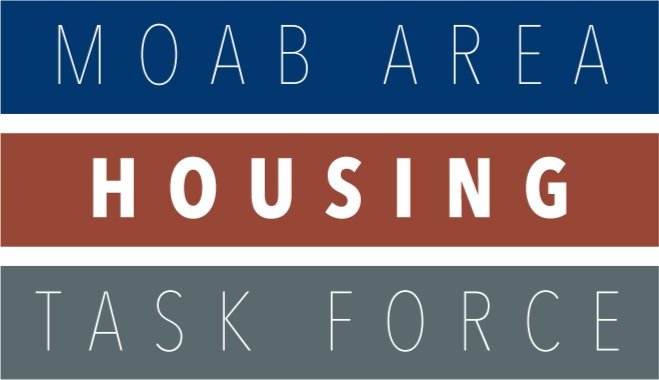2023 Moab Area Affordable Housing Plan Goal Tracking
Moab Area Affordable Housing Plan
The Moab Area Housing Task Force writes and updates an affordable housing plan for Grand County every 5 years. In 2023, the newest version was published and adopted by the City and County which includes housing data, analysis, and creates housing goals and action steps pursued by a variety of avenues.
With local government support, bolstered with survey data, we are confident that the goals and action steps will progress and result in better housing opportunities for Grand County residents.
The Goals and Action Steps in the Moab Area Affordable Housing Plan (MAAHP) are divided into five categories;
#1: Meet the Housing Needs Projections included in the MAAHP.
Supply
Goals
Action Steps
.
#2: Increase the diversity of the housing stock.
-
Moab City: Moab City is undergoing zoning code updates right now. Would be beneficial to have conversations with P/Z to ensure that the code is being analyzed for gaps in potential affordable housing development incentives and priorities.
Grand County: The County Planning and Zoning Department has extensively been working toward updating their Future Land Use map, specifically prioritizing adequate areas for more clustered development. This will be reflected through land use code updates within 2024 and 2025. Collaboration between the MAHTF and the P&Z director is recommended.
-
Grand County: In 2022 Grand County established the Alternative Dwelling Overlay. Property owners who were approved for this overlay could develop sites for which long term vehicle or RV dwellers could reside in safe and stable conditions.
-
Description text goes here
-
Item description
#3: Increase ADU and infill development.
Timeline
Active
Active
Upcoming
Upcoming
#1 Preserve local housing options in perpetuity.
#2 Increase the percentage of primary residency of the current housing stock by 10% by 2030.
#3 Increase the number of income and occupancy restricted homes from 362 (2022) to 1,500 by 2030.
Stability
Goals
Action Steps
.
.
#4 Decrease the number of cost-burdened households from 36% (2021), specifically with an effort to decrease the number of cost-burdened renters (50% in 2021) and households with annual incomes of less than $50,000 (65.6% in 2021).
-
The Housing Authority of Southeastern Utah HASU current administers the deed restriction incentive programs for the City and County.
-
Current Moab City and Grand County development incentive programs require 50 year minimum deed restrictions.
-
Moab Area Community Land Trust is currently investing in finding legal avenues for this initiative.
-
-
Timeline
Active
Active
Upcoming - 2026
Upcoming - 2026
Upcoming - 2027-2029
Regularly update and maintain pertinent Moab area affordable housing data and statistics.
Data
Goal
Action Steps
.
-
MAHTF has undertaken an annual housing survey and created this housing data dashboard to meet this goal.
-
The data collected by the annual housing survey will be used in the next Housing Plan written by the MAHTF
Timeline
Active
Upcoming - Begin update in 2027
Identify funding streams to encourage affordable housing development.
Fiscal Support
Goal
Action Steps
.
.
Timeline
Active
Active
Upcoming - 2027
1# Ensure that policy decisions, programs, and projects aspire to support impacts to the environment, climate, and public health and well-being.
Sustainability
Goals
Action Steps
.
2# Support all residents’, regardless of income level, opportunity to participate in climate change mitigation and adaptation tools, and the environmental and financial benefits of water and energy conserving buildings and sites.
3# Advance water conservation policies in both the City and the County.
-
-
-
-
Item description
Timeline
Upcoming - 2029
Active
Upcoming - 2029
Upcoming - 2026
Future Plans For Goal and Action Step Tracking
The Housing Task Force will continue to update this dashboard with actions taken to accomplish the goals and action steps.
Your local government and non-profits hear you and would like to show you what they’ve been working on to improve conditions for all residents.

